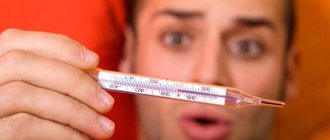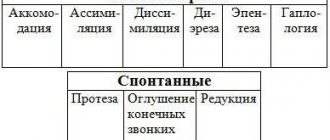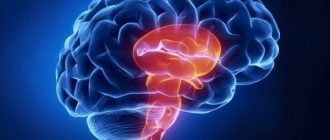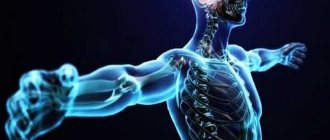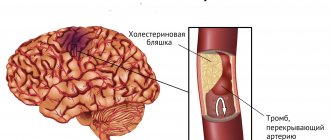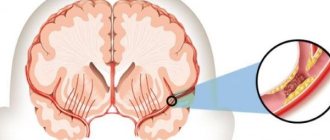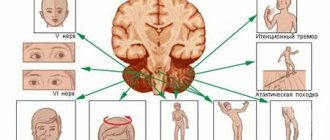Among the various diseases of the cardiovascular system, which affect adults and old people, and in some cases even children. The second most common types of stroke are hemorrhagic and ischemic stroke. It has several signs, among which body temperature is important. Temperature indicates the processes occurring in the body; by this indicator, the degree of brain damage can be determined. The temperature indicator is used when making forecasts for the further development of the disease, the degree of recovery and assessing the patient’s condition.
Temperature indicators for stroke
Temperature readings during a stroke are not the main sign of the disease. Neurological manifestations come to the fore in symptoms and treatment.
The stroke itself in the first minutes usually does not cause a critical or diagnostically significant deviation in body temperature.
During the first hours from the onset of a brain stroke with a hemorrhagic form of the disease, the temperature gradually rises, and after 2-3 hours it can reach 38 degrees. A temperature of 37.2 degrees is considered the norm for a hemorrhagic stroke; exceeding this indicator worsens the patient’s chances of recovery.
With the ischemic type of disease, body temperature usually drops to 36 degrees. If the readings do not fall below this level, you can hope for successful treatment of the stroke.
We recommend reading - Stroke - first signs, symptoms, treatment and consequences
Features
A cerebral infarction is preceded by atherosclerosis of the organ’s vessels, narrowing of the arteries, increased blood viscosity, and the formation of blood clots. Ischemic stroke is characterized by a decrease in readings to 36C. High temperatures are rare, in which case it is necessary to monitor the dynamics of the condition. Even in case of low levels, the patient is prescribed antipyretics to prevent deterioration of the condition.
With a hemorrhagic stroke, a vessel ruptures; it develops after physical fatigue or severe stress.
After a hemorrhagic attack, hyperthermia occurs more often. If the mark on the thermometer has reached forty degrees Celsius, it is necessary to exclude the development of complications:
- pneumonia;
- exacerbation of chronic pathologies;
- hemorrhages in the brain;
- swelling.
Did you know! A person can suffer up to 4 strokes, if they are not extensive. However, with each subsequent attack the risk of death increases.
Causes of hyperthermia
If the focus of impaired blood circulation is located in the hypothalamus and/or brain stem, then hyperthermia will be a mandatory symptom of a stroke.
The hypothalamus is responsible for thermoregulation of the body; damage to this part of the brain leads to pathological changes in heat exchange rates.
There is another reason for high temperature during a stroke. Sometimes a brain stroke occurs against the background of acute inflammatory processes in the body, for example, influenza, pneumonia, etc. Hyperthermia in such cases is caused by the body’s fight against an infectious pathogen.
Preventive recommendations
Rehabilitation after a stroke requires patience and attention from relatives and loved ones. To prevent the development of complications, it is necessary to provide the patient with careful regular care:
- To prevent the formation of bedsores in a bedridden patient, it is recommended to use a mattress and turn the stroke patient from one side to the other.
- Treating its edges and rinsing with a catheter will help to avoid the inflammatory process in the tracheostomy area. The surrounding skin should be lubricated with an antiseptic.
- In case of infectious diseases of the respiratory tract, it is necessary to monitor the condition of the air in the room: it should be fresh and cool. Drinking plenty of fluids and massage will help prevent mucus from drying out.
- Equally important is compliance with hygiene procedures and washing.
- In an old person, the immune system is weakened; at the time of an acute attack, existing chronic diseases may worsen. Be sure to familiarize your doctor with his medical history so that adequate measures can be taken.
If the temperature rises during a stroke and lasts a long time, this indicates extensive brain damage. In some cases, persistent low-grade fever is observed for a month. The treatment strategy is determined by the doctor on an individual basis.
Why is hyperthermia dangerous?
Hyperthermia during a stroke is a dangerous phenomenon that worsens the course of the disease and reduces the chances of restoring health after a brain stroke.
In the cells of brain tissue during hyperthermia, metabolism and tissue respiration accelerate. These processes require an increased flow of oxygen, but with the disease the opposite phenomenon occurs - oxygen starvation.
Hyperthermia during a stroke leads to faster death of brain cells and significantly increases the focus of ischemic damage.
An increase in temperature contributes to the development of inflammatory processes, necrosis, disorders of cerebral regulation, damage and changes in the brain matter. In severe cases, high fever can be fatal.
Who is at risk
Stroke is commonly thought to be an age-related disease, but this is not true. Naturally, in old age you need to be more attentive to your health. In young people, the disease can occur if there is a history of vascular pathologies, cardiac disorders, anemia, or hypertension.
Pay attention to the following symptoms:
- headache;
- noise in ears;
- throbbing in the head and neck.
The presence of at least one of them may be a precursor to a stroke. Don't ignore these manifestations. It is necessary to seek advice from a specialist.
Temperature during stroke
In the first days after a brain stroke, doctors fight for the patient’s life and normalization of his basic physiological indicators. The patient experiences unstable temperature, high blood pressure, rapid heart rate, rapid breathing, etc.
The temperature often rises after a stroke. Hyperthermia during this period can be due to a number of reasons, the main ones being:
- extensive brain damage due to ischemic attack;
- inflammation around the damaged area of the brain;
- infectious complications after a stroke (pneumonia, etc.);
- exacerbation of chronic diseases;
- inadequate patient care.
Temperature values
What does the temperature reading after a stroke indicate? It characterizes the degree of brain damage and reflects the dynamics of the victim’s recovery.
Based on the fluctuations of this criterion, it is customary to distinguish several values:
- Moderate hyperthermia – the level does not exceed subfebrile values (up to 37.50 C). May be a variant of the norm. The optimal value after a stroke is considered to be 37.20 C, but a deviation of 1 degree is not critical.
- If the readings increase above 38 degrees, further examination is necessary to determine the cause.
- A low temperature of up to 36.0 °C during an ischemic attack is a positive characteristic.
Based on the marks on the thermometer, you can predict the outcome of the disease. The higher they are, the less likely a person is to recover from a stroke. The temperature does not change immediately after the stroke is stopped, however, the later it rises, the worse the prognosis for the patient.
Complications of hyperthermia
Changes caused by high temperature during a stroke:
- acceleration of metabolism during oxygen deficiency;
- necrosis of the inflammation focus;
- blood flow disturbance;
- expansion of the cerebral infarction zone during ischemia;
- focal changes in the structure of matter.
Without a rapid decrease in numbers, post-stroke pathologies develop, which can lead to a person’s disability or result in his death.
Violations during the rehabilitation period
The rise in temperature even after an impact is life-threatening. It does not matter whether the person suffered an ischemic or hemorrhagic type of stroke. Research by specialists shows that when hyperthermia occurs within a month, there is an increase in mortality. Factors contributing to the increase in indicators:
- the presence of an infectious process;
- insufficient patient care;
- bedsores;
- tracheostomy;
- diseases of the lower respiratory tract.
Despite the temperature deviation from the norm, the patient may not complain of health, there is no pain. A characteristic symptom of the complication is the low effect of taking antipyretics.
The longer the temperature remains outside the normal range, the greater the pressure on tissues and the higher the likelihood of complications.
.
Consequences of rising temperatures
Against the background of increased oxidative reactions in tissues, their need for oxygen simultaneously increases. Without restoration of normal blood supply, hypoxia quickly sets in. In the absence of adequate therapy, the rehabilitation process slows down, the patient may fall into a coma or die.
Treatment of hyperthermia
Treatment of hyperthermia during stroke is carried out with the help of antipyretics - medical antipyretics. The doctor prescribes medications individually for each patient. It is advisable to use Paracetamol, Aspirin, Ibuprofen. It is prohibited to use strong analgesics and antibacterial agents.
Cold compresses are used as additional treatments for high fever after a stroke.
During the rehabilitation period, it is important to follow all doctor’s recommendations. If the body temperature rises, give the patient only those anti-hyperthermia medications prescribed by the attending physician, and only when necessary.
Do not self-medicate, do not offer the patient unverified home recipes, or medications based on the recommendations of other people.
Do not use non-steroidal antipyretic anti-inflammatory drugs, as they improve blood rheology, which provokes bleeding after a hemorrhagic stroke.
You will learn more about how to help a person with a stroke in the following video:
First aid
Measures to reduce the temperature depend on the cause that caused it and are determined by the doctor. For this purpose, it is necessary to undergo a diagnostic examination.
It is not allowed to engage in treatment without the supervision of a doctor. Before contacting a medical facility, you can use antipyretic drugs. Under no circumstances should antibiotics or hormonal drugs be taken orally.
Before giving the patient medicine, you need to make sure that his swallowing function is not impaired.
If the temperature does not return to normal after taking medications, it is reduced in a hospital setting. To do this, the patient is injected with lytic mixtures by drip. If immediate hospitalization is not possible, you should avoid overheating and wipe the neck, elbows, and popliteal fossae with cool water.
Carefully! Some anti-inflammatory drugs help thin the blood. Taking them may cause bleeding.



